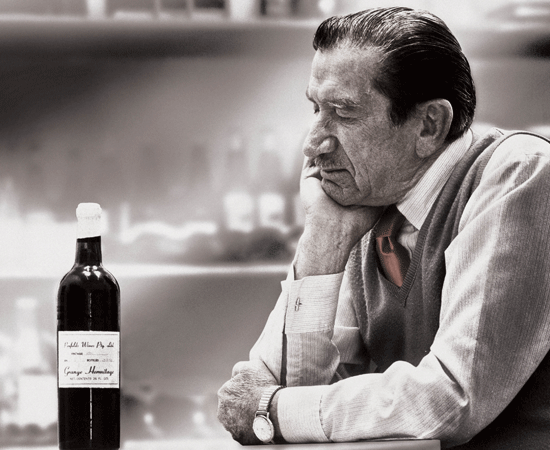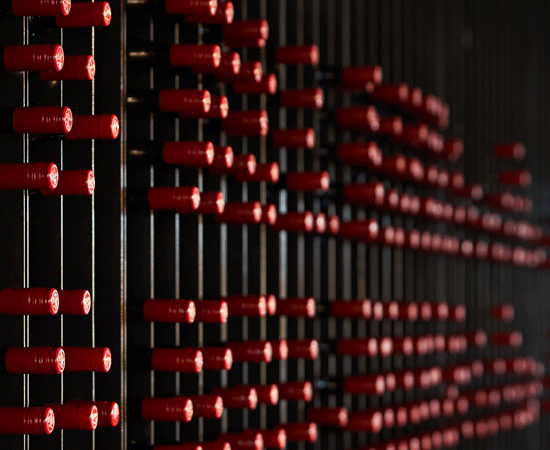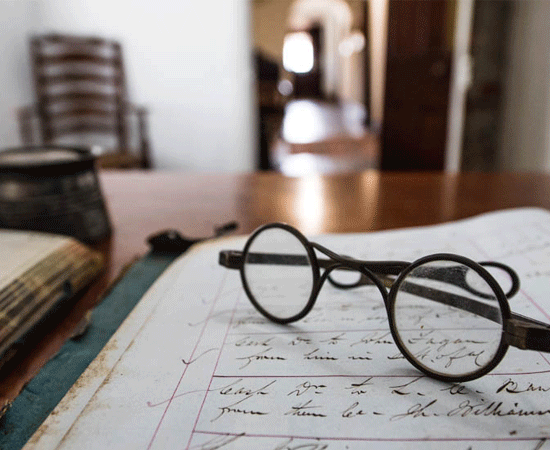since 1844.
Are you sure you want to remove this item?
You will be logged out on changing location.
Do you wish to continue?
Your cart will be emptied on changing location.
Do you wish to continue?

Cellaring Your Wine
Spearheaded by Penfolds flagship Grange is a formidable stable of red and white wines that will reward careful cellaring. In order for your Penfolds wines to deliver their true potential, it is important to follow a few simple measures. This information will help with the correct storage of your wine.
Why cellar wines?
Simply, most high quality wines will improve with age. As a wine matures over the passage of time it will slowly evolve, developing greater complexity and bottle-aged characters. Complex reactions occur during the maturation process, creating new aromas and flavours as the structure of the wine gradually changes.
Ideally, buy a few bottles of each wine you intend to cellar and periodically assess the development of the wine. By doing so, you will discover what the ideal ‘drinking window’ is for each of your wines, in accordance with your own palate.
Do all wines benefit from cellaring?
All Penfolds Bin, Luxury and Icon wines will reward careful cellaring. However, the optimum bottle maturation period will depend upon whether the wine is red or white, its ‘style’, the format (size) of the bottle and the vintage. Some wines are deliberately made for earlier consumption, whereas others are crafted for the long haul.
As a rule of thumb, red wines generally enjoy longer and more predictable cellaring than white wines. However, the evolution of the screw-cap closure has had a positive impact on maintaining freshness and quality, especially with white wines. Indeed, some styles of white wine can evolve with ease for a decade or more.
Poorly stored wines may not retain their original freshness and will most likely develop faster and less predictably than bottles that have enjoyed a constant, steady maturation process in a temperature-controlled cellar or wine cabinet. Wine is especially vulnerable to fluctuations in temperature. It is always best to transport wine in cool conditions and to store wine in an environment that minimises temperature variation.
Where is the best place to store my wines?
Wine collectors have the option of cellaring their wine at home or in public storage. If you are unable to provide appropriate conditions for your wine at home, and your
collection represents significant investment, then professional wine storage may be the solution.
If you do not have a suitable wine cellar, then a wine storage cabinet (wine fridge) is an economical and practical way of storing wine at home. They are especially useful in warmer climates and high-density living areas. Wine cabinets are designed to store bottles at the optimal temperature for long-term maturation.
The most important cellaring tip is to keep your wine in a steady, cool environment and to avoid significant temperature fluctuations. A constant temperature of 18 degrees Celsius (or less) is better for your wine than 14 to 26 degrees Celsius over a year. The cellaring conditions need to be dark, free from vibrations and from any background odours which may permeate through cork.
Always lay bottles on their side
Bottles should be stored horizontally to ensure the cork remains moist. Corks may dry out if a bottle is left standing upright, which over time may even shrink the cork, allowing the ingress of air and resulting oxidation of the wine. Screw-capped bottles are more resilient, but it’s best to have these bottles lying down as well so that if a bottle is damaged you will identify leakage earlier. If wine is stored in racks, it is wise to face the labels up so the whereabouts of the sediment is obvious. This is advantageous when decanting the wine.
How long will a wine improve in the bottle?
It is difficult to predict when a wine will be at its best. Do you enjoy a wine with the vibrancy of youth or the more mellow complexities of a fully mature wine? Is your preference for a red wine with predominant primary fruit characters, or for a more mature expression, with nuances of coffee, cedar, tobacco and other secondary characters?
It is very much a case of individual preference and will depend upon the style and vintage of the wine in question. It is important to remember that smaller format bottles will mature more rapidly than standard bottles or magnums, as the ratio of air in the ullage space to the volume of wine is higher.



